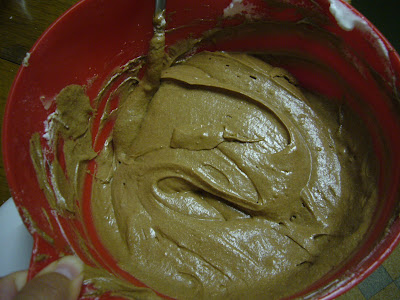So, here we are! 8 months after creating this blog, we have reached 5000 visitors! Thanks to Google Analytics we have seen that we have visitors not only from Spain and Switzerland (as expected) but also from USA, Austria, France, Italy, Great Britain, Chile, Colombia, Mexico, Southafrica, Portugal, Canada and Argentina. Thanks to all of you for visiting our blog! We would love to have some feedback from you, so feel free to write comments to our recipes or to our blog!
To celebrate this occasion, nothing better than a cooking meeting between the two creators of this blog, to investigate about the recipe of the queen of the chocolate cakes: the Sachertorte! In the book we used as reference (Leiths Baking Bible), this cake is included in the section "Speciality cakes" (because it requires more time and skill). And... we failed in the skill part! We manged to prepare the cake correctly, but it seems that we made a huge mistake when preparing the icing as, instead of a nice and glossy icing, we discovered the recipe to obtain the best eatible earth that I've ever seen in my life! It really looked like earth... That's why this recipe is callled "Sachertorte (variation)"!
As we were not able to tell were we made the mistake to obtain such a disastrous result, we will transcribe the recipe exactly as it is written in the book, expecting that you are more skilled than us and manage to get the expected icing. Good luck!
Before we start:
- Difficulty: advanced
- Preparation time: 45 min for the cake + 10min for the glaze + 15min for the icing + cooling time
- Cooking time: 50 min
- Cost: medium
- Origin: Austria, Hotel Sacher Wien
- Recipe obtained from: Leiths Baking Bible, "Sachertorte"
Ingredients (serves 8-10):
For the cake:
170g plain chocolate, chopped into small pieces
140g butter, softened
115g icing sugar, sifted
6 room-temperature eggs
115 caster sugar
125g plain flour, sifted
For the glaze:
225g apricot jam
Half teaspoon lemon juice
For the icing:
285g granulated sugar
290ml water
225g plain chocolate, chopped into small pieces
Preparation:
- Grease a 23cm spring-form tin and line the base with a disc of baking parchement.
- Melt the chocolate in a heathproof bowl fitted over, but not in, a saucepan of steaming water. Remove from the heat and allow to cool slightly.
- Cream the butter in a mixing bowl, add the icing sugar and beat well until pale and fluffy. Separate the eggs and add the yolks one at a time, beating well after each addition.
- Whisk the egg whites until stiff. Whisk in the caster sugar gradually and whisk again until stiff and shiny.
- Working quite quickly but carefully, mix the cooled melted chocolate into the creamed mixture, the fold in the egg whites and flour, using a large metal spoon. Pour into the prepared tin.
- Bake in the centre of a pre-heated oven at 180ºC for 50 minutes or until a sharp knife or skewer inserted into the centre comes out clean.
- Remove the cake from the oven and allow to cool in the tin for 10 minutes, then loosen, turn out on to a wire rack and leave to cool completely.
- Meanwhile, make the glaze: heat the apricot jam with the lemon juice in a saucepan. Bring up to the boil, then push through a sieve and allow to cool slightly. It should be warm when used.
- Make the icing: put the granulated sugar into a thick-bottomed saucepan and add the water. Heat very gently, ensuring that the sugar dissolves before the water boils. Once the sugar has dissolved, bring up to boil and boil to the thread stage (when a little syrup is placed between a wet finger and thumb and the fingers are opened, it should form a sticky thread about 2,5 cm long). The temperature will be aproximately 105 ºC.
- Remove the sugar syrup from the heat and place the pan in a roasting tin filled with warm water. This will prevent the syrup from cooking further. Leave for 1 minute, then add the chocolate and stir constantly until the chocolate has melted and the icing has cooled and achieved a coating consistency.
- When the cake is cold, place upside down on a wire rack set over a tray. Paint the top and sides with the warm apricot glaze and allow to cool.
- Pour the icing quickly over the cake, tilting it as the icing runs over to ensure a smooth, even covering. Do not disturb the icing once it is on the cake. Allow to set.
After having burnt our fingers a couple of times (with a blister!) and get a kind of thread, it was quite clear that we didn't get the concept of "thread state" correctly. We should try some other time, but I will avoid putting my fingers in the pan!









No hay comentarios:
Publicar un comentario